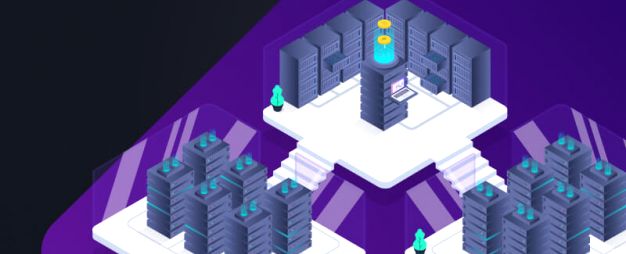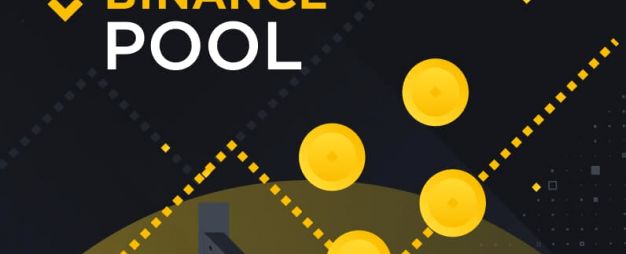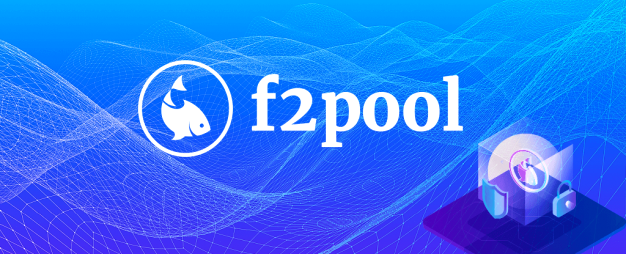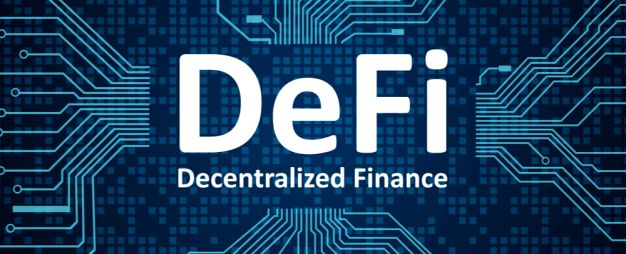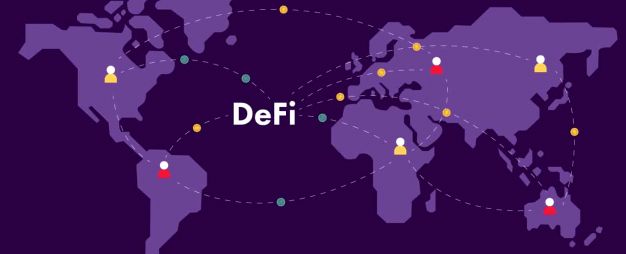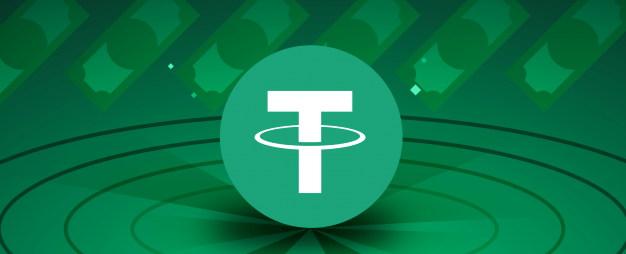What is cryptocurrency mining
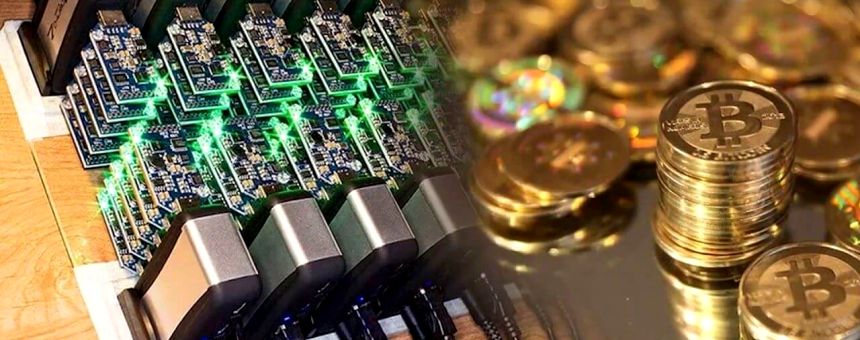
In order to understand what mining is, we first need to understand what Blockchain is.
Literally translated, blockchain is a chain of blocks.
Blocks are data about transactions and transactions within the system, represented in a cryptographic form. All blocks are arranged in a chain, that is, they are interconnected.
Blockchain can be described as a database that stores all cryptocurrency movements across wallets and information about all the wallets that have ever existed. All of this is specially encrypted to create linked blocks and copied across millions of miners' computers.
Nothing can be changed in a block, as it would have to be changed in the next block as well, and so on to the end of the entire chain.
Blockchain works as follows
All blocks contain an array of certain data and weigh 1 MB. A new block is created only after the old block is closed. Each block in the chain contains a certain key. And until it is decrypted, the block is not closed. As soon as the cryptographic key for a block in the form of a hash* is found, the block is closed and a new one is added. (Each block takes 10 minutes to form and weighs 1 MB.)
Miners are engaged in mining, namely in mining cryptocurrencies. Miners are people who, using special equipment, check transactions, confirm them, write them into a block and create a new one.
(Miners are in charge of finding new blocks and are rewarded for this).
Mining is a type of activity to mine a new cryptocurrency using special equipment connected to a computer and a pool. It provides infrastructure and security for the entire blockchain.
Miners give away the processing power of their devices and receive a cash reward for each new block. For example, in the Bitcoin blockchain, the reward per block, in 2022 is 6.25 BTC.
Miner income = voluntary transaction fees + reward per block.
How do miners mine cryptocurrency
Initially, it was possible to mine bitcoin even on an ordinary processor or laptop. Then the complexity increased, there was more competition, and had to use additional power in the form of GPUs, which produced a much higher hashing speed with fairly good energy efficiency and a reasonable price for the devices themselves.
However, the complexity of bitcoin mining, competition, and the price increased by several hundred times, and it was necessary to use even more powerful equipment - asics.
Asics are powerful devices, used for one specific action, for example, for BTC or LTC mining (for each cryptocurrency you need to select different Asics).
At first, miners could buy their own equipment (Asics), start mining by themselves, and take all the rewards for themselves. However, now it is simply impossible to mine btc and catch a block on its own.
Therefore, miners began to unite in groups (pools) and divide the mined bitcoins according to their capacity.
A mining pool is a site that combines all of the miners' power to increase the probability of finding a Block. The reward for the block mined by the pool is distributed among all participants according to their mining algorithm.
The principle of mining in a pool is not different from mining alone - a block is found by one miner out of many connected to the pool. But the search for that block is done by all the miners in the pool.
In order to determine each miner's contribution to the work and correctly calculate their reward, a stratum protocol was created. This protocol is used to issue tasks to miners to calculate the block, but only with reduced complexity. As soon as the miner finds a solution with a difficulty higher than the set one, the solution is sent to the pool. This is called a share* - essentially a small block. It can also be a balloon with a complexity higher than the network complexity, in which case it will be a block solution. The pool calculates each miner's contribution by the number of orbs sent and their complexity.
The criteria for selecting a mining pool
- The popularity of the mining pool, how popular it is on the market, who founded it, and what place it is in.
- The total hash rate (power) of the pool.
- What commission does the pool offer you (how much do you have to give to the pool). Usually, the percentage varies from 1% to 5%.
- Technical support (how quickly responds to questions and solves your problems).
- Availability of a personal manager.
- Individual characteristics: how many servers and in which regions the pool has; how often there are failures in the pool; in what country the mining pool was founded, etc.
The top mining pools (BTC as an example)
You can choose the best pool for mining in 2022 on our website or at:
https://miningpoolstats.stream/
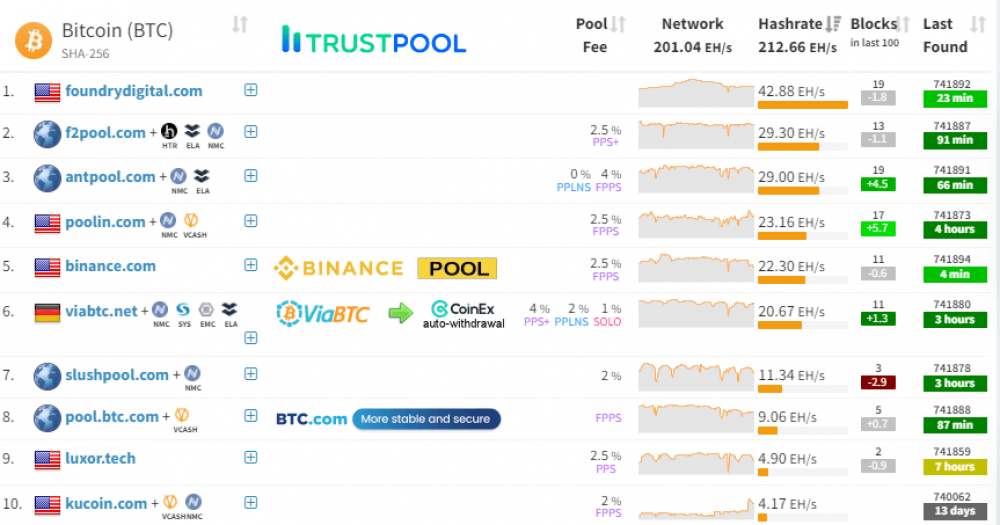
What to choose for mining in 2022: ASIC or GPU
It is possible to mine cryptocurrency using asics and GPUs (video cards). These devices perform the same functions, but they have huge differences. Each has its own advantages and disadvantages.
Asic is a powerful processor. It is used to solve a specific task and is sharpened to a certain algorithm of actions. An asic has higher processing power than a video card and has more options for mining cryptocurrencies.
Each asic is customized for a specific mining algorithm. This is why it is important to choose an asic that will fit the algorithm of the coin you are going to mine.
Asic is used to mine bitcoin and other sha 256 coins; Lightcoin and Dogecoin, Scrypt coins; Monero, Cryptonight coins; and Dash, X11 coins.
Graphics card (GPU) – small hardware, sharpened for solving a lot of tasks. Computing power is not as high as attics, that is why you can not mine bitcoins with video cards (not enough power). GPUs are usually used for mining ether and other currencies on the Ethash algorithm.
The main difference between these devices is the different processing power and mining of different cryptocurrencies (an asic mines one cryptocurrency, a video card mines another).
If you choose a GPU, you can opt for:
- NVIDIA GeForce RTX 2070 SUPER
- AMD Radeon RX 5700.
- AMD Radeon RX 5700.
- Radeon VII Radeon.
- RX 6900 XT/6800 XT.
Tom Asics for bitcoin mining in 2022
Antminer S17 – 2020 model. There is an economy mode in which the power is reduced to 35 TH/s, and power consumption to 1470 w.
- Hashrate – up to 53 TH/s (Antminer S17); up to 64 TH/s (Antminer S17e).
- Antminer S19/S19PRO – model released in 2021.
- Hashrate – up to 95 TH/s (Antminer S19); up to 110 TH/s (Antminer S19 PRO).
- Power consumption – 3250 W.
Bitmain asics, for altcoins:
Antminer L3+ – hashrate up to 504 MH/s, energy efficiency – 800 W.
(Suitable for cryptocurrency algorithm scrypt).
Antminer Z11 – hashrate up to 133 Ksol/s, energy efficiency – 1418 W.
(Suitable for Equihash cryptocurrencies).
Antminer D3 – hashrate up to 17 GH/s, power efficiency – 900 W.
(Suitable for cryptocurrencies with x11 algorithm).
Antminer DR5 – hashrate of 35TH/s, energy efficiency – 1610 W.
(Suitable for cryptocurrencies with Blake256 algorithm).
In order to start mining you need
- Choose a cryptocurrency to mine.
- Decide on the equipment on which you will mine (GPU or Asic).
- Choose the necessary equipment (used or new; what kind of overclocking hash rate is needed; what should be the energy efficiency).
- Choose a pool for mining your cryptocurrency.
- Connect to the pool and start mining.
